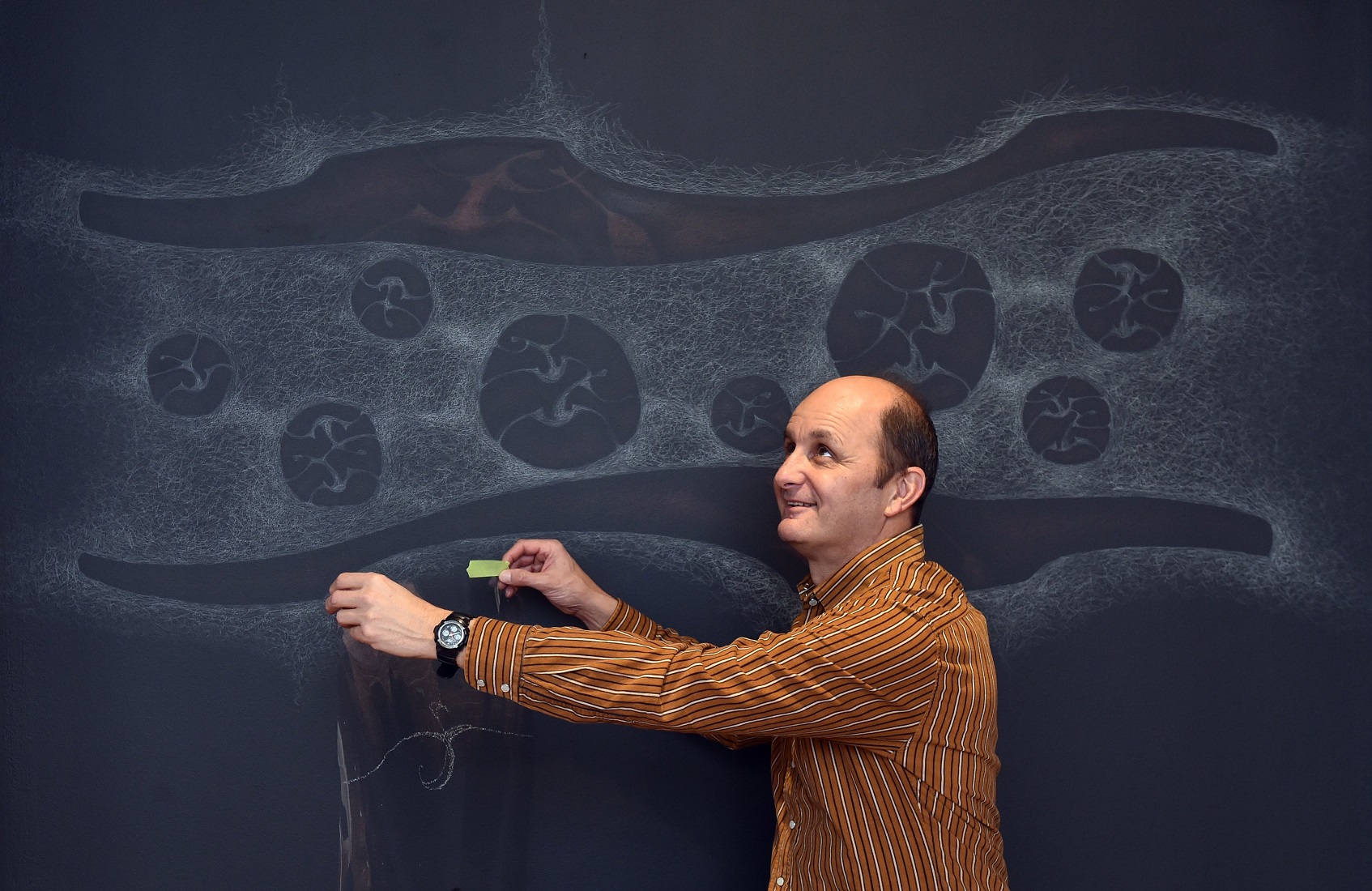Ross Hemera produced the artwork Kua hoki mai ngā Karae directly on the walls of the art gallery in 2021.
He used crayons and kōkōwai (red ochre) to accurately imitate te ana whakairo (Māori rock art) found around North Otago and South Canterbury.
Because of the gallery’s plans to re-paint the walls, Māori curator and archaeologist Dr Gerard O’Regan gathered a team of artists to help preserve the piece.
The artists covered the walls in a plastic film and traced the drawings, a method of archaeological recording used to preserve te ana whakairo in the 1950s.
Mr Hemera was not involved in the tracing itself, but artist and co-ordinator Mya Morrison-Middleton shared his enthusiasm for the project.
"Ross has been kept in the loop the whole time. He described it yesterday as a form of flattery."

"I think for artists and archaeologists, you feel really intimate with the artwork.
"You’re tracing the actual lines, you’re making the same strokes and trying to build up the same tone and weight of the pigment that Ross has done.
"So I think you become really familiar with the drawings.
"I hope ... what people get out of it by doing the tracing is they feel really close to the drawings."
Dr O’Regan gave his team just two days to complete the work, emulating the same time constraints experienced by archaeologists in the past.
He described the process as very thorough, having to consider various challenges along the way.
"You’d think it’s really simple, but there’s so much complexity.
"It’s given me a huge level of respect for both Ross as an artist but also the archaeological predecessors who worked in the field," he said.
They are yet to confirm where the tracings will end up, but they will remain in the art gallery for the time being.








